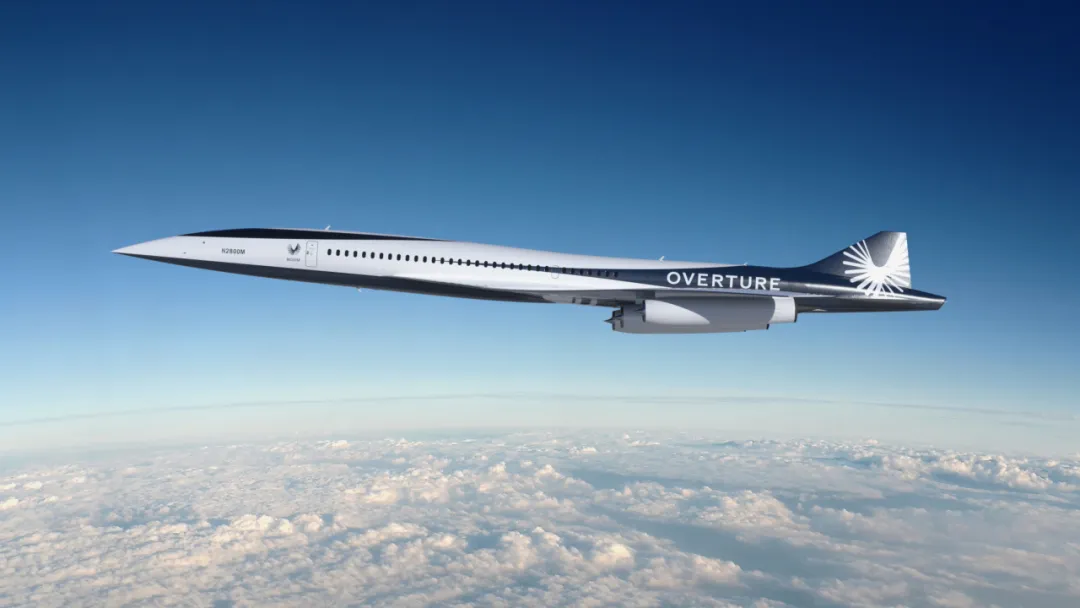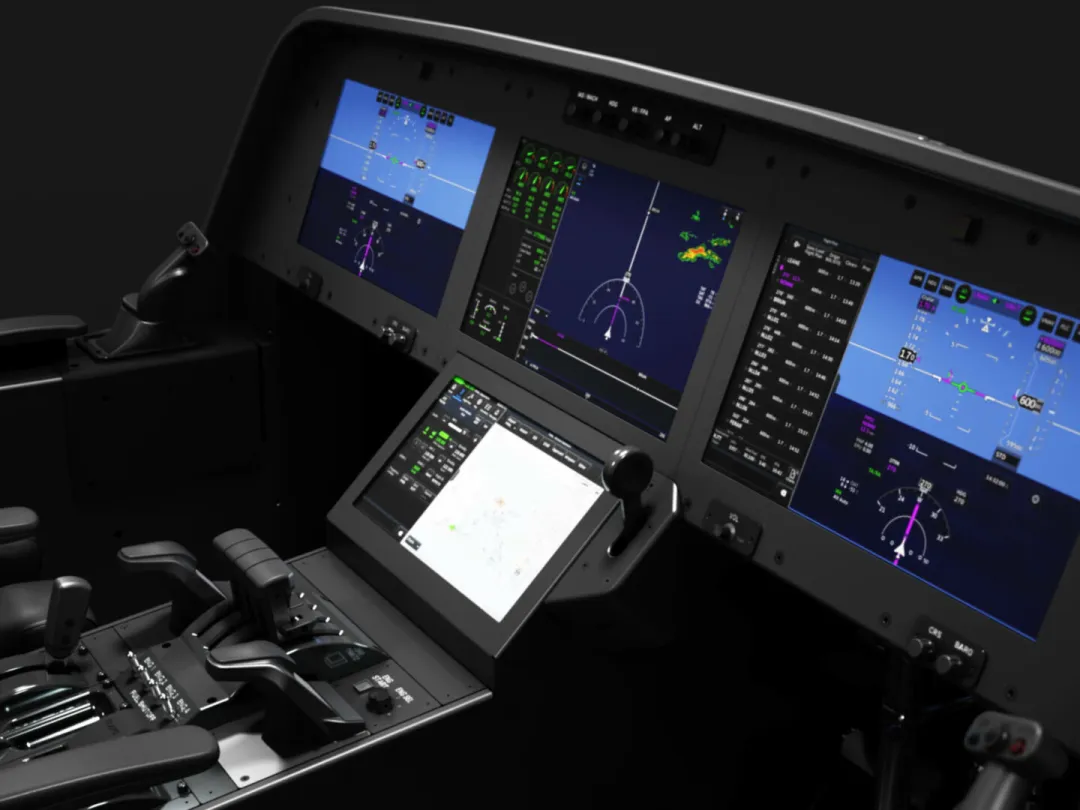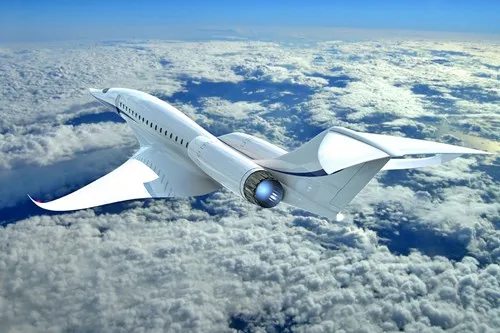Fighting the sonic boom: Commercialization of the next generation of supersonic aircraft

Will the next generation of supersonic aircraft need sonic boom situational awareness displays? Dr. Robert Joslin, associate professor at the School of Aeronautics at Embry-Riddle Aeronautical University, thinks so.
There has been significant progress in the development of a civil supersonic transport (SST) aircraft, and in the development of relevant regulations by civil aviation authorities, the most since the retirement of Concorde in 2003.
While supersonic flight presents many unique challenges, such as high-altitude ozone-depleting nitrogen oxide emissions and jet engine noise in airport environments, sonic booms remain the most challenging issues involving technology, regulations, public acceptance, and marketing—especially in the United States, where regulations require that the sonic booms produced by aircraft flying at supersonic speeds must not impact the ground. This comprehensive ban applies to all aircraft, both military and civilian, that have been approved by the Civil Aviation Administration to fly supersonic flights in a specific airspace. It is worth noting that many supersonic flight applications are supported by software tools that can predict where and how strong the sonic boom will hit the ground.

If the next generation of supersonic transport aircraft, such as Boom Supersonic's Overture, are to be commercially successful, they must gain public acceptance and permission to break the sound barrier over land.
Real-time awareness
Real-time perception
Concerns about sonic booms can be mitigated by requiring cockpit displays to provide real-time and predictive sonic boom situational awareness (SBSA), thereby ensuring that pilots have access to information about flight restrictions so that supersonic flight does not produce sonic boom impacts on the ground, further meeting regulatory requirements. In addition, the ban on sonic boom impacts on the ground can be lifted by providing sufficient supporting data for aircraft with attenuated/distributed sonic booms; and by revising relevant regulations to clearly define certain acceptable peak overpressure disturbances (in pounds per square foot) and their related human responses (i.e., the perceived level [PLdB] of impact sound). The pilot uses the display to monitor and control the aircraft by adjusting the aircraft's flight envelope, flight path, and aircraft configuration. This is somewhat similar to the noise certification standards and operating limits under the provisions of 14CFR Part 36/CS-36 and 14CFR Part 91-Subpart I, with the only major difference being that 14CFR Part 36/CS-36 does not require subsonic aircraft put into operation to be equipped with aircraft noise signature display equipment in the cockpit. Therefore, procedures can be used to ensure compliance (such as power setting, aircraft configuration and climb angle during takeoff).
Dynamic environment
Pneumatic environment

Boom Supersonic unveiled the proposed cockpit configuration for its Overture SST in July 2024. It is equipped with the Honeywell Anthem avionics suite.
However, aerodynamic environmental variables in supersonic flight cause the sonic boom signature to fluctuate continuously. Therefore, pilots of supersonic aircraft must maintain continuous situational awareness of the sonic boom to avoid any harmful and unacceptable consequences and impacts on man-made objects (such as buildings, seismic sensors and car alarms), wildlife, the environment (including unstable terrain - such as avalanches) or other members of the public.
Cockpit display design requirements to support sonic boom situational awareness (SBSA) need to consider the physics of sonic booms, including the initial transition boom when the aircraft crosses the sound barrier (Mach 1) and the subsequent sustained sonic boom during cruise flight.
The main characteristics of a sonic boom include intensity (amplitude), spread area, directionality, and sustainability. The shock waves generated by a supersonic aircraft merge in the near field and eventually propagate to the far field until they reach the ground, producing an impact overpressure and audible sound. The external geometry of the aircraft, the weight of the aircraft, and the instantaneous flight envelope are the main factors that determine the near-field sonic boom, which merges and propagates to the far field. Atmospheric conditions, topography, and turbulence excite the characteristics of the far field, which in turn determine the geometry and size of the sonic boom spread area on the ground.
Sonic booms radiate in all directions. Under certain atmospheric conditions, a sonic boom may reflect into the upper atmosphere and propagate as a secondary "overhead sonic boom" with one or more secondary ground impact regions at greater distances from the aircraft. The sonic boom may also propagate farther than the actual flight path of the aircraft due to wind speeds, temperature gradients, or when a supersonic aircraft makes a slight turn.
In addition, there is a favorable combination of atmospheric conditions, flight altitude, and Mach number that achieves the so-called sonic boom "cutoff" condition. This phenomenon occurs when the sonic boom reflects (refracts) from the flight altitude below the aircraft and fails to hit the ground. The speed at this time is called the Mach number cutoff speed, which is the maximum speed that the aircraft can reach in cruise flight without producing an audible sonic boom to the ground. In standard atmospheric conditions, this speed can be as high as about Mach 1.5. At Mach number cutoff conditions, the only sound heard on the ground may be a low roar similar to distant thunder or engine noise.
Variables
variable

The Japan Aerospace Exploration Agency (JAXA) is one of many organizations researching future supersonic cruise aircraft.
The path of a sonic boom and the area of ground impact are affected by factors such as atmospheric pressure, temperature, density, humidity, turbulence, and wind speed. For example, turbulence and/or terrain may reduce the amplitude of a sonic boom by randomly redirecting the energy of the sonic boom, while humidity and clouds may attenuate or disperse the sonic boom.
Therefore, real-time variables that should be considered in the algorithm of the sonic boom perception system include: aircraft trajectory (such as speed, altitude, dive angle, turn, maneuver, acceleration), aircraft external design geometry/size, aircraft weight, aircraft configuration, atmospheric conditions (such as temperature, wind speed, humidity, altitude, turbulence) and terrain/topography. Due to the uncertainty of the impact of sonic booms on the ground due to the random influence of global and local weather/turbulence, it is necessary to combine aircraft data with terrain and meteorological models to predict the propagation path of sonic booms and the area affected on the ground.
It is also important to consider that the shock wave generated by an aircraft takes several minutes to propagate forward and impact the ground in the sonic boom cone area. Therefore, the prediction function should include the ability to analyze the planned trajectory, incorporating weather and terrain data to determine the impact location and intensity of the sonic boom, so that the flight plan can be executed effectively and efficiently. In addition, the system should determine the appropriate trajectory based on the expected and acceptable sonic boom footprint, while providing pilots with in-flight guidance and warning cues to help them fly the optimal trajectory. In addition, the system should provide air traffic controllers with the ability to analyze flight plans in order to approve flight plans, monitor aircraft in flight, and review flight data to meet relevant regulatory requirements.
Ideally, the sonic boom awareness system should be integrated with a dynamic map display to show the current sonic boom footprint and the maximum Mach number and/or minimum flight altitude to prevent the shock wave from affecting the ground. In addition to the above, the display should also have a preview function that shows the predicted sonic boom footprint based on the current flight plan and any revised new flight plan, and provide flight guidance information on the primary flight display, navigation display or head-up display (HUD). Although aerospace research institutions, avionics suppliers and civil supersonic aircraft manufacturers have been developing multiple variants of sonic boom awareness systems and cockpit display systems, the development of regulatory requirements for sonic boom awareness systems is critical to ensuring the successful and safe operation of civil supersonic transport aircraft in global airspace.





